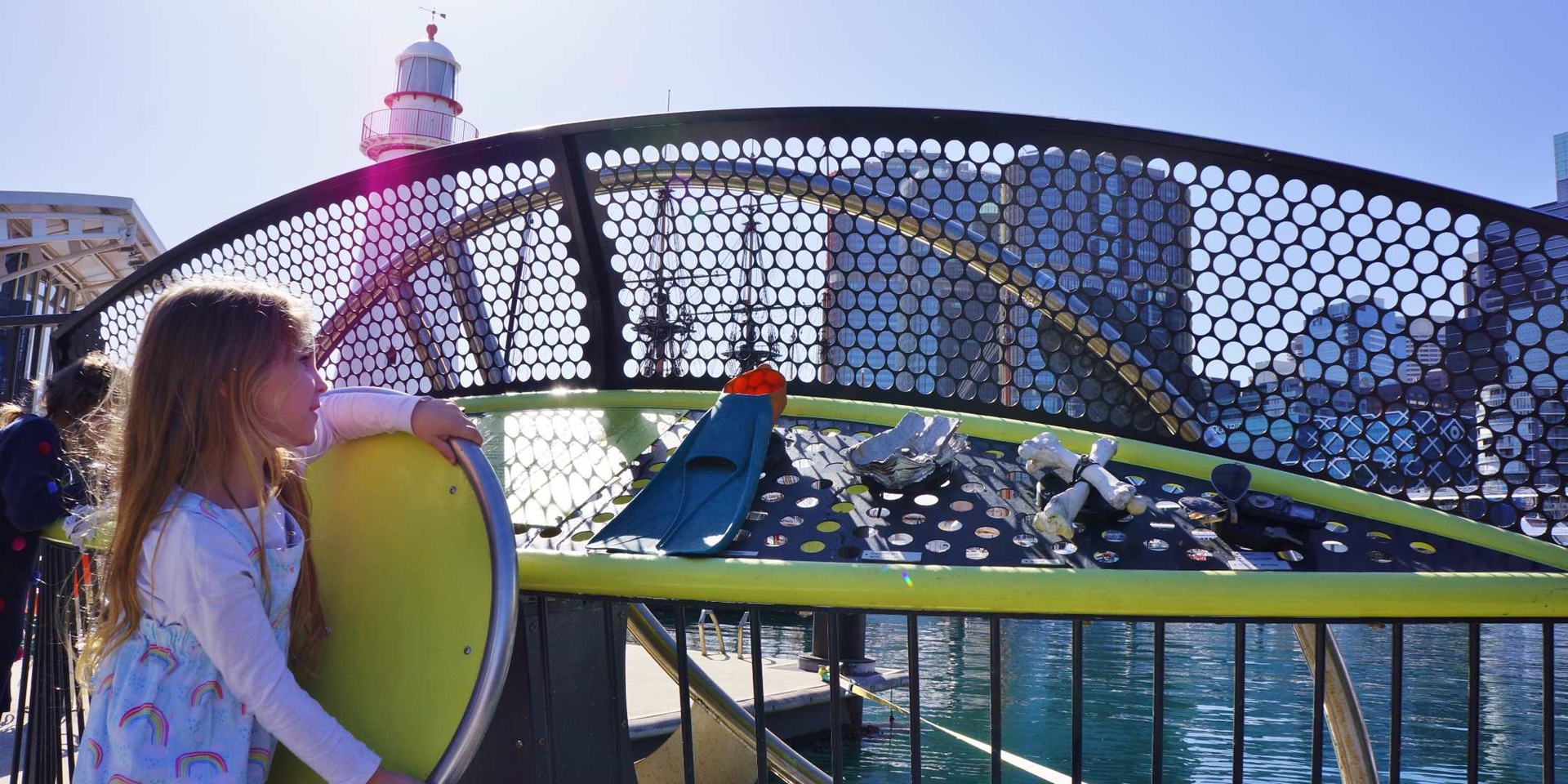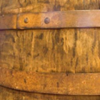
National Science Week at the Museum
What a weekend! The waterfront was full of visitors looking to explore the underwater world of Sydney Harbour. Over 1200 people came through the door and we hope every one of them left with a greater understanding of the harbour’s diversity of life and work that is being done by organisations across NSW to protect and engage with this underwater world.
Secrets of Sydney Harbour are being revealed right now! Checkout the National Australian Maritime Museum at Darling Harbour today. @SydneyMarine @ANMMuseum @harbourprogram @harbourprogram @WorldHarbours @OEHmedia @Aus_ScienceWeek @UTS_Science pic.twitter.com/QubLBnZpxb
— Sydney Science Fest (@SydScienceFest) August 19, 2018
Up close with the secrets of Sydney Harbour
The Sydney Harbour Laboratory was a highlight. Housed in the sunny Endeavour Pavilion, next to our historic replica tall ship HMB Endeavour, the Sydney Institute of Marine Science, Office of Environment and Heritage and Silentworld Foundation joined the Museum to present a suite of hands-on learning activities.
Just a taster of what we have waiting at the end of the @ANMMuseum dock today @harbourprogram @harbourprogram @WorldHarbours @OEHmedia @Aus_ScienceWeek pic.twitter.com/7KaS0vSb4A
— Dr Katherine Dafforn (@DrKDafforn) August 18, 2018
Experiences included ‘design your own’ seawalls, plankton illustration, microplastics and beach watch, and virtual experiences of bathymetric surveys, Heritage Near Me and underwater Sydney Harbour. There was a touch tank (everyone loves touch tanks) and the chance to talk with maritime archaeologists, see some diving gear and touch artefacts recovered from shipwrecks.
Open for sciencing! @ANMMuseum with @DR_GRIB @DrKDafforn @willfig @DrABugnot @SydneyMarine @UNSW @Sydney_Uni @Macquarie_Uni @UTS_Science pic.twitter.com/6RcV9VsoS3
— Sydney Harbour Research Program (@harbourprogram) August 19, 2018
Showcasing some cool #3DReefs stuff we do at the @ANMMuseum for the last day of #ScienceWeek @SydneyMarine pic.twitter.com/IqZhYF52DR
— Marine Lechene (@Marine_Lechene) August 19, 2018
At Kids on Deck families enjoyed face painting, art making, experiments and interactive games inspired by maritime archaeology and marine life – engineering boats that float and paper submarines, printing reusable tote bags and sea creature softies.
Out on the performance platform, Professor Pufferfish and his trusty side-kick Charlotte debunked the scientific myths and mysteries of the harbour environment in our Harbour Hoots show: how seagulls fly, how boats float and the perils of plastic pollution in the water. This message was supported by a working ocean rubbish bin (seabin) on loan from The Seabin Project for National Science Week.

Our Seabin has recovered almost an entire wheelie bin of rubbish in just two weeks! Image: Seabin Project.
Our Seabin has recovered almost an entire wheelie bin of rubbish in just two weeks!
The Museum recently purchased a suite of remotely operated vehicles (ROVs). National Science Week was a chance for us to get them in the water as visitors had the opportunity to get hands-on with underwater robots and practice driving them around the Sea Science Pontoon, spotting fish and other hidden treasures.

Visitors could pilot the underwater robots (ROVs) and practice driving them around the Sea Science Pontoon, spotting fish and other hidden treasures. Image: Emily Jateff/ANMM.
Zen #jellyfish of Darling Harbour #Sydney #scienceweek #ROV #OpenROV pic.twitter.com/gURXUSufWH
— Pippa Hambling (@PippaKH) August 24, 2018
Adrift with citizen science and plankton
Dr Martina Doblin of UTS gave a presentation on the citizen science project Adrift in the museum theatre. This was followed by the launch of the installation Adrift at the Museum, where visitors are invited to go on a journey with the microscopic marine plankton known as ‘Gymn’.
Find out how you can become a virtual oceanographer and help marine researchers understand ocean microbes! #plankton #marmic #CitizenScience #visualization @uts_c3 @BOM_au @IMOS_AUS @STEMEduc https://t.co/yvHZWlJoNu
— Prof Martina Doblin (@MartinaADoblin) August 16, 2018
This installation is part of the Adrift project, which encourages Citizen Scientists to map, in a simulated web environment, where marine microbes experience the largest variation in their environment, and pinpoint areas of the global ocean where cells must have large tolerances to survive. Adrift is a collaborative project developed by the University of Technology Sydney’s Climate Change Cluster (C3), Faculty of Science and Data Poetics, Faculty of Design, Architecture and Building together with the Centre for Science Communication at the University of Otago, New Zealand.
Anglerfish: An expected ‘winner’ of scientific debate
Rounding out the day, and the end of a fantastic science week at the Museum, we hosted The Science Nation debate tournament: the greatest discovery ever made. Doing battle in Sydney were: theoretical physicist, Dr Sam Bladwell; oceanographer, Prof Martina Doblin; marine biologist, fish sex researcher and underwater explorer, Prof William Gladstone; Maritime archaeologist, Kieran Hosty; biologist, maritime archaeologist Renee Malliaros; neuroscientist, Dr William Redmond; physicist, Dr Peter Rohde; and psychology PhD student Nikki-Anne Wilson.
A big THANK YOU to the stars of Sydney’s Great Debate – Sam Bladwell, Kieran Hosty, @MartinaADoblin, @rae_malliaros, William Redmond, @NikkiAnneWilson & @peter_rohde. It’s great to finally know the greatest discovery ever made is the sex life of the angler fish pic.twitter.com/a5zKVU2O9X
— The Science Nation (@TheSciNation) August 19, 2018
After an hour and a half of whirlwind debate, Bill Gladstone emerged victorious as the winner, with his support of the sex lives of anglerfish as the greatest discovery ever made.
— Emily Jateff, Curator of Ocean Science and Technology





